Hiking is an extraordinary adventure, allowing us to delve into the heart of nature and experience the beauty of what it has to offer. Much like you, I’ve worn the shoes of a frustrated hiker on packed trails and in situations where trail etiquette was left in the dust.
This led me down a path of curiosity – digging deep into research to create this thorough guide on hiking etiquette. Brace yourself – we’re about to journey beyond simple hiking tips; we’ll explore how we can better respect Mother Nature and our fellow adventurers!
Key Takeaways
- Follow the Leave No Trace rule to keep the trail clean and respect nature.
- Yield to other hikers, bikers, or horse riders for a safe and pleasant hiking experience.
- Hike single – file in a group to minimize impact on the trail and not bother others.
- Keep volume down, avoid loud noises or music, and enjoy the tranquility of nature.
Basic Rules of Trail Etiquette
When hiking, it’s important to follow some basic rules of trail etiquette to ensure a positive and safe experience for everyone involved.
Follow the Leave No Trace rule
The “Leave No Trace” rule is close to my heart. This rule means you keep the trail clean. Do not leave trash behind or make marks on trees. By doing this, we show our respect for nature and help save it for future visits.
The beauty of the great outdoors stays natural and unspoiled. We all need to learn about Leave No Trace principles for less harm to our environment while hiking in areas with wildlife.
It’s a top rule that does well by others, animals, and planet Earth.
Yield to other hikers
I make sure to yield to other hikers when I’m on the trail. The rule of thumb is “wheels yield to heels“. So, if you are biking or driving a motorized vehicle, give way to walkers.
This means both bikers and drivers should stop for people walking.
Groups should also yield to smaller crowds or solo hikers. It’s part of being a kind and careful trail user. Even mountain bikers need to stop for those hiking or riding horses. Yielding keeps everyone safe and happy on the trail!
Hike single-file in a group
Hiking in a group is fun but we must do it right. We should always hike single-file. This rule helps keep the trail nice for others. It stops the trail from getting too wide and messing up nature.
It also makes sure we do not bother other folks on the path. Having clear rules when hiking is key, so let’s make sure to line up one after another!
Keep volume down
Keeping the volume down while hiking is really important. It’s one of the basic rules of trail etiquette, and it helps preserve the peaceful and natural environment of the trail. When we keep our voices low and have conversations in a soft and respectful tone, we allow other hikers to enjoy the tranquility of the outdoors.
Additionally, avoiding shouting, yelling, or playing loud music is crucial in maintaining a harmonious hiking community. Let’s be considerate hikers and keep the volume down for everyone’s quiet enjoyment on the trails.
Stay on the trail
Staying on the trail is super important when you’re hiking. It helps keep you safe and protects the environment too. Going off-course can be dangerous because you might get lost or hurt.
Plus, it can damage plants and wildlife habitats. By sticking to the trail, you show respect for nature and help preserve the beauty of the wilderness. So remember, always stay on the trail when you’re out hiking!
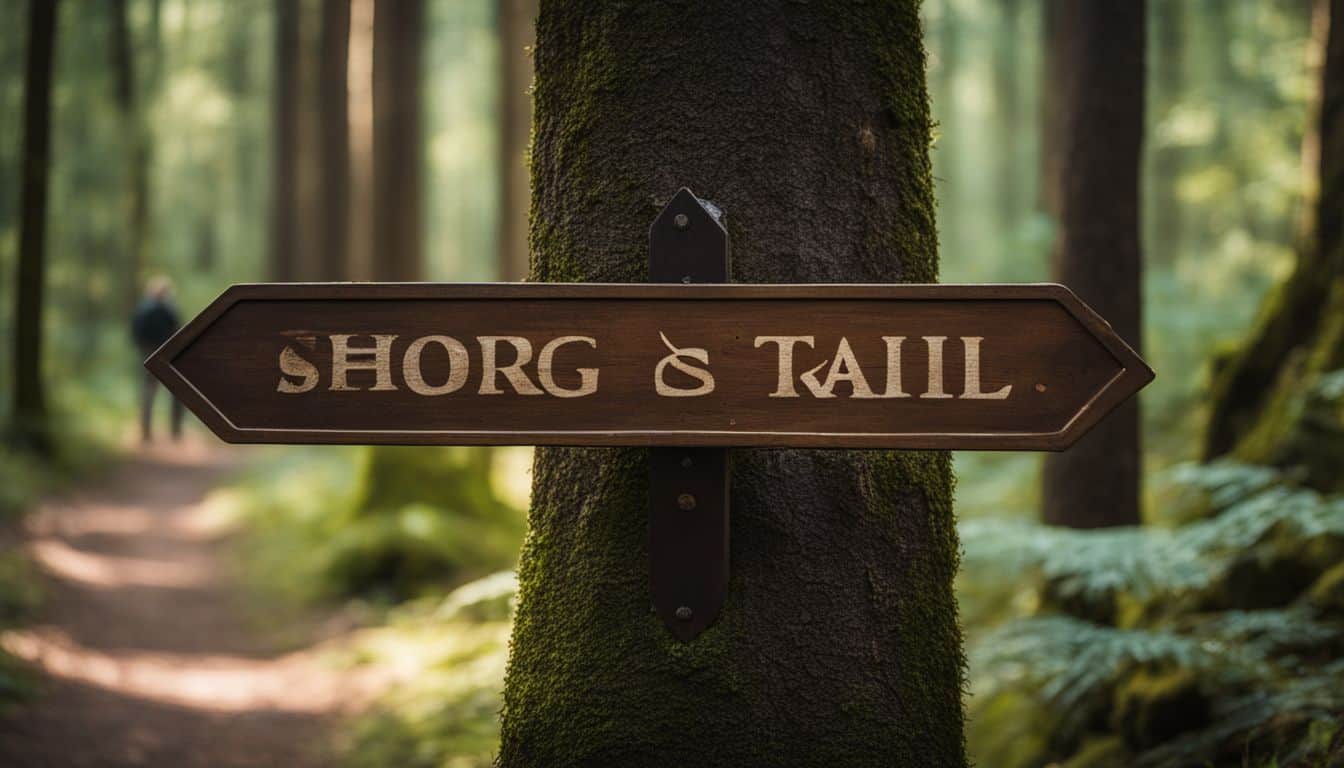
Respect wildlife
Respecting wildlife is an important part of trail etiquette. As hikers, we should remember that animals live in these natural spaces and it’s their home. We need to be mindful of their habitats and not disturb or harm them.
By respecting wildlife, we can contribute to the conservation of their habitats and help preserve the beauty of nature for future generations. It’s important to observe animals from a safe distance and avoid approaching or feeding them.
Keeping our voices down and leaving no trace behind also helps protect their environment. Let’s all do our part in being responsible hikers and showing respect for the amazing creatures that share our trails.
The slowest hiker should lead
When hiking in a group, it’s important to remember that the slowest hiker should lead. This helps maintain a comfortable pace for everyone and keeps the group together. By allowing the slower hiker to set the speed, it promotes cohesion and consideration among all members.
It also allows faster hikers or runners to pass on the left, ensuring a smooth flow on the trail. Following this rule not only minimizes our impact on the environment but also creates a respectful atmosphere for all trail users.
So next time you hit the trails with friends, let the slowest hiker take charge and enjoy a pleasant hiking experience together.
Control your pets
I always make sure to control my pets when I go hiking. It’s important to keep them on a leash and be aware of other trail users. This helps ensure everyone’s safety and prevents any unnecessary conflicts or accidents.
Additionally, by controlling our pets, we can also protect wildlife and their habitats. It’s our responsibility as pet owners to pack out pet waste and respect the environment we’re hiking in.
Let’s all do our part in practicing good trail etiquette by keeping our furry friends under control while enjoying the great outdoors!
Pack out pet waste
One of the basic rules for hikers is to always pack out pet waste. It’s important to clean up after your dog on the trail and not leave their waste behind. Leaving dog waste on the trail is considered a violation of trail etiquette and can negatively impact other hikers’ experiences.
Dog waste should never be left at trailheads, along trails, or in the woods. As responsible dog owners, we should practice Leave No Trace principles and find a way to pick up after our dogs while hiking.
It’s part of being considerate towards others and maintaining the cleanliness of our natural spaces when enjoying outdoor adventures with our furry friends.
Be mindful of other trail users and the land
It’s important to always be considerate of other hikers and the land when you’re out on the trail. By being mindful of others, we can ensure a positive hiking experience for everyone involved.
This means being respectful and courteous towards fellow hikers, giving them space if needed, and allowing faster hikers to pass by stepping aside or moving to a wider part of the trail.
It also means following Leave No Trace principles by not littering, keeping noise levels down, and staying on designated trails to prevent unnecessary damage to the surrounding environment.
Detailed Guide on Trail Etiquette for Hikers

Here’s my detailed guide on trail etiquette for hikers. When hiking, it’s important to follow these rules to ensure a pleasant experience for everyone:.
1. Follow the Leave No Trace rule: This means leaving nature as you found it. Don’t litter or disturb plants and wildlife.
2. Yield to other hikers: Step aside and let faster hikers pass you if they’re coming from behind.
3. Hike single-file in a group: This helps minimize your impact on the trail and makes it easier for others to pass.
4. Keep volume down: Be mindful of noise levels, especially if you’re listening to music or having conversations with others.
5. Stay on the trail: Avoid going off-trail and creating new paths, as this can damage the environment.
6. Respect wildlife: Observe animals from a distance and avoid feeding them or getting too close.
7. The slowest hiker should lead: This allows the group to maintain a comfortable pace without anyone feeling rushed.
8. Control your pets: If you bring your furry friends along, make sure they are well-behaved and kept on leash when required by regulations.
9. Pack out pet waste: Always clean up after your pets and dispose of their waste properly in designated areas or carry it out with you.
10.Be mindful of other trail users and the land : Show respect towards fellow hikers, mountain bikers, equestrians, or any other users sharing the trails with you.
By following these guidelines, we can all enjoy our time in nature while preserving its beauty for future generations!
Step Aside on Slopes
When hiking on slopes, it’s important to know how to navigate them safely and considerately. One key rule is to always step aside for larger groups. This means that if you’re hiking with just one or two people and you come across a bigger group, it’s best for you to be the one who moves out of their way.
It’s easier for a single person to do so than for a larger group to make space. By stepping aside, you allow the larger group to pass without any inconvenience or disruption.
Another tip for hiking on slopes is taking turns when navigating tricky sections. Instead of everyone trying to go at once, take it slow and go one person at a time. This helps maintain balance and stability on the slope, reducing the risk of accidents or falls.
Remember that safety should always come first when hiking!
So next time you encounter slopes during your hike, make sure to follow these simple tips: step aside for larger groups and take turns when navigating tricky sections. These small gestures can make a big difference in ensuring an enjoyable and safe hiking experience for everyone involved.
Let Cairns Be
When hiking on trails, it’s important to respect the natural landmarks known as cairns. Cairns are stacked rocks that help hikers navigate their way along a trail. They serve as markers and can be crucial for staying on the right path, especially in areas where signs or blazes are not present.
However, some hikers may unknowingly topple or rearrange these cairns, which is considered improper trail etiquette. To ensure the safety and enjoyment of all hikers, it’s essential to leave cairns undisturbed when you come across them.
Cairns play an important role in wilderness navigation and should be treated with respect. Disturbing or moving them can cause confusion for other hikers who rely on these markers to find their way.
So remember, if you encounter a cairn while hiking, let it be and resist the temptation to tamper with it. By doing this simple act of respect for nature and outdoor recreation etiquette, you contribute to preserving the integrity of hiking trails for everyone’s benefit.
Take a Long Walk Before Taking a Dump
When nature calls on the trail, it’s important to take a long walk away from the path before relieving yourself. This helps prevent waste from being left on the trail and ensures that it doesn’t contaminate water sources.
If you need to go, find a spot far enough away from any bodies of water. It’s also a good idea to bring a small shovel or trowel to bury your waste properly. By following this simple rule of taking a long walk before taking care of business, we can help preserve the natural beauty of the trail and minimize our impact on wildlife and other hikers.
It’s an easy way to practice clean hiking and show respect for the environment.
Say Hello to Other Hikers
Saying hello to other hikers is a polite and friendly gesture on the trail. It helps create a positive atmosphere and a sense of community among hikers. When you see another person hiking, it’s nice to nod your head or give a simple greeting.
This small action can establish a connection with fellow hikers and foster camaraderie in the outdoor community. You never know, saying hello could lead to potential interactions and conversations where you can share valuable information about trail conditions or recommend nearby attractions.
So don’t be shy, say hello to your fellow hikers!
Drop In and Tune Out
When hiking, it’s important to drop in and tune out. This means disconnecting from distractions and fully immersing yourself in the hiking experience. By doing this, you can truly appreciate nature, connect with your surroundings, and find tranquility on the trail.
To achieve this state of immersion, it’s best to avoid distractions like listening to music or talking on your phone while hiking. Instead, focus on the sounds of nature around you – the rustle of leaves, chirping birds, or rushing water.
By tuning out external noise, you can better appreciate the beauty and serenity of your surroundings.
Dropping in and tuning out not only enhances your connection with nature but also promotes safety on the trail. When you’re fully present and mindful of your environment, you’re more likely to notice any potential hazards ahead or changes in weather conditions that may affect your hike.
So next time you hit the trail, remember to drop in and tune out. Put away those distractions and allow yourself to become immersed in the natural world around you. By doing so, you’ll have a more meaningful and enjoyable hiking experience while fostering a deeper appreciation for Mother Nature.
Be Prepared and Plan Ahead
Being prepared and planning ahead is crucial for a successful hiking trip. Here are some tips to help you ensure you’re ready to hit the trail:
- Check the weather forecast before heading out.
- Research the trail and familiarize yourself with the route.
- Make sure you have the necessary gear, such as proper footwear, backpack, water bottle, and navigation tools.
- Pack enough food and water for the duration of your hike.
- Bring a map or GPS device to navigate the trail.
- Let someone know about your hiking plans, including your expected return time.
- Carry a first aid kit in case of any injuries or emergencies.
- Dress appropriately for the weather and wear layers that can be easily adjusted.
- Start your hike early in the day to allow plenty of time to complete it safely.
Follow Hiking Safety Guidelines
As a hiking enthusiast, it’s important to prioritize safety while out on the trails. Here are some key hiking safety guidelines to keep in mind:
- Always check the weather forecast before heading out on a hike.
- Plan your route and let someone know where you’re going and when you’ll be back.
- Bring a map, compass, or GPS device to help navigate your way.
- Dress appropriately for the weather and wear sturdy footwear.
- Stay hydrated by bringing enough water and snacks for the duration of your hike.
- Take breaks when needed and listen to your body’s signals.
- Be aware of potential hazards such as steep slopes or loose rocks.
- Avoid hiking alone if possible, but if you do go solo, let others know your plans.
- Carry a first aid kit with essential supplies in case of any injuries.
- Respect wildlife and keep a safe distance, never approaching or feeding them.
Conclusion on Trail Etiquette For Hikers
In conclusion, mastering trail etiquette is essential for hikers to have a safe and enjoyable experience in nature. By following the Leave No Trace rule, yielding to other hikers, hiking single-file in a group, keeping volume down, and staying on the trail, hikers can show respect for wildlife and fellow outdoor enthusiasts.
Taking these top tips to heart will ensure that we can all coexist harmoniously while exploring the beauty of our natural surroundings. So let’s lace up those boots and hit the trails with proper hiking etiquette!
FAQs on Trail Etiquette For Hikers
1. What is trail etiquette?
Trail etiquette refers to the guidelines and practices that hikers should follow to ensure a safe and enjoyable experience for themselves and others on the trail.
2. Why is trail etiquette important?
Trail etiquette is important because it helps preserve nature, promotes safety, and enhances the overall hiking experience for everyone. It allows hikers to coexist harmoniously with other trail users and minimizes negative impacts on the environment.
3. What are some top tips for mastering trail etiquette?
Some top tips for mastering trail etiquette include staying on designated trails, yielding to uphill hikers, keeping noise levels low, packing out trash, and respecting wildlife and vegetation.
4. Should I bring anything with me when practicing trail etiquette?
When practicing trail etiquette, it is recommended to bring essentials such as water, snacks, proper footwear, sunscreen, insect repellent, a map or GPS device, a first aid kit, and appropriate clothing layers depending on weather conditions.
5. Can you provide more details about yielding to uphill hikers?
When encountering uphill hikers on a narrow or steep section of the trail, it’s courteous to step aside downhill (if possible) or at least share half of the path so they can pass without losing momentum. This allows them to maintain their energy while ascending.

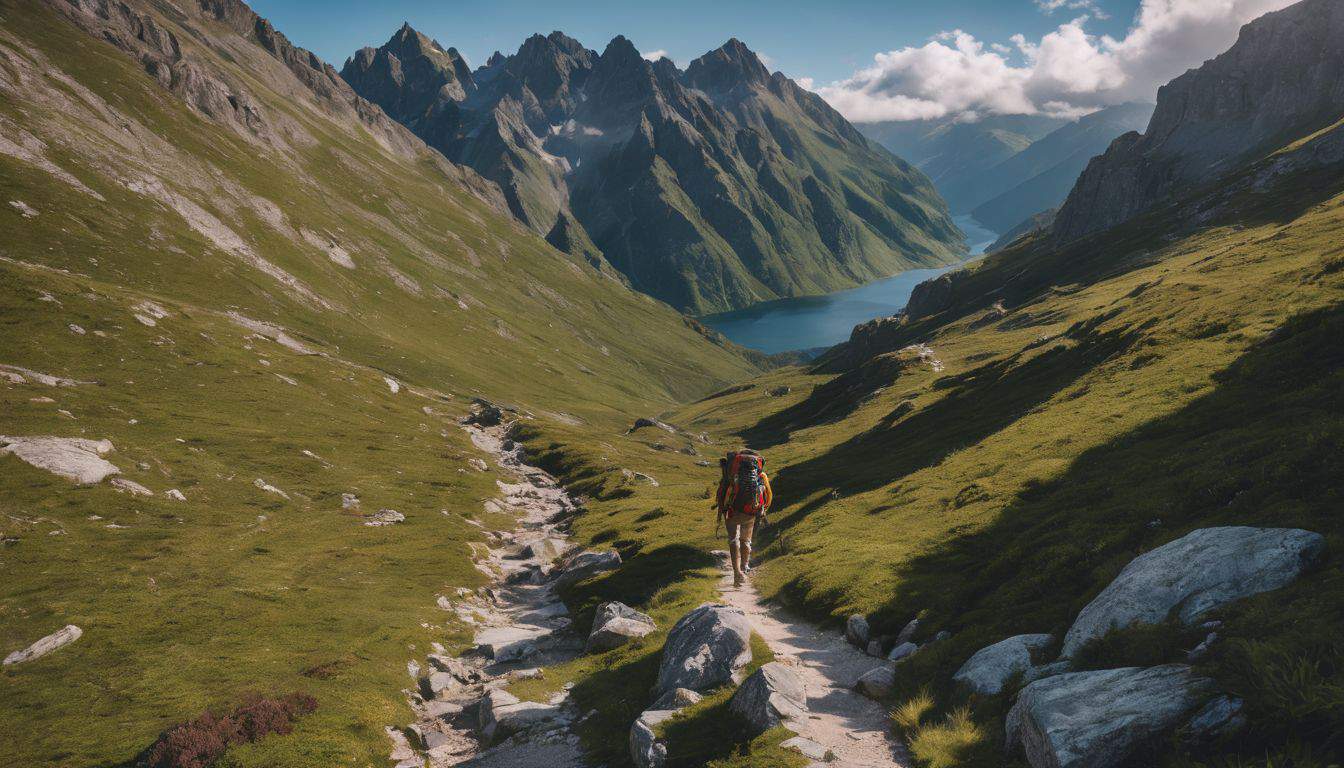
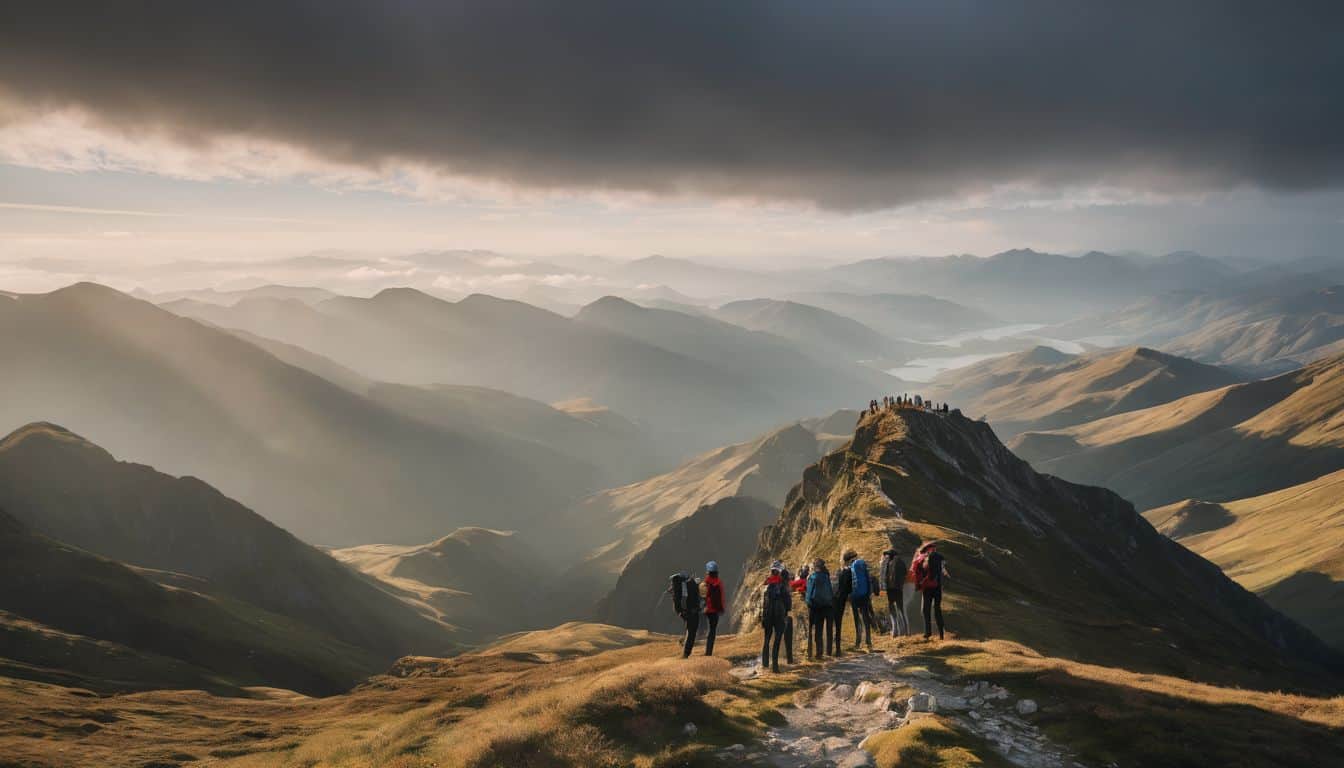
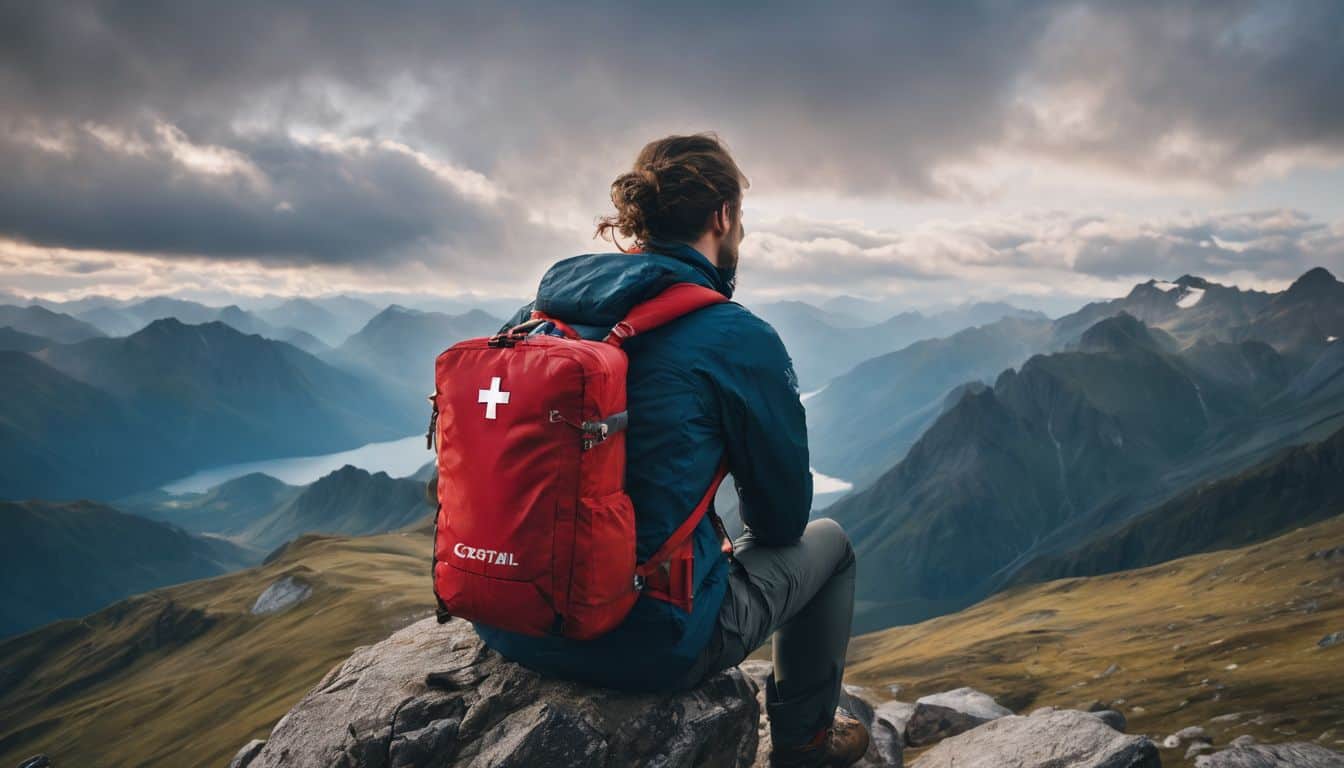
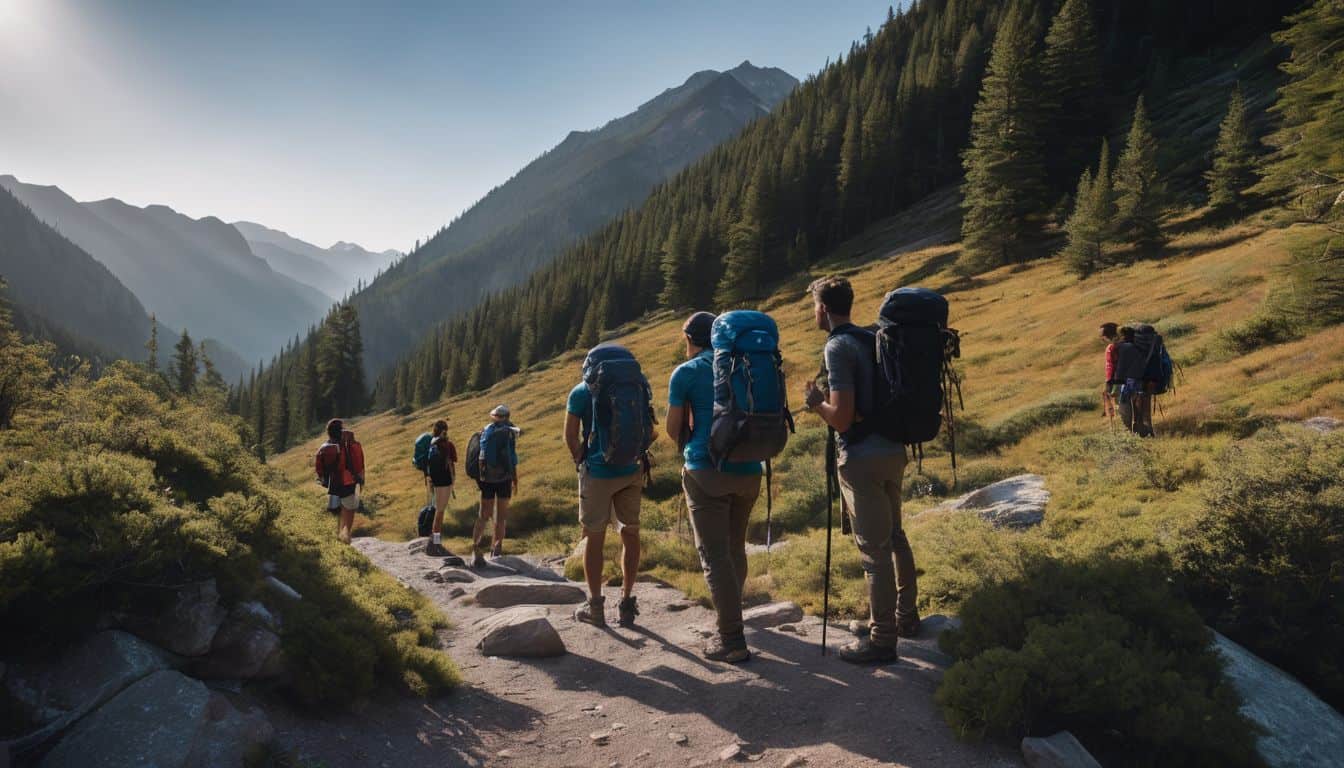
Leave a Reply